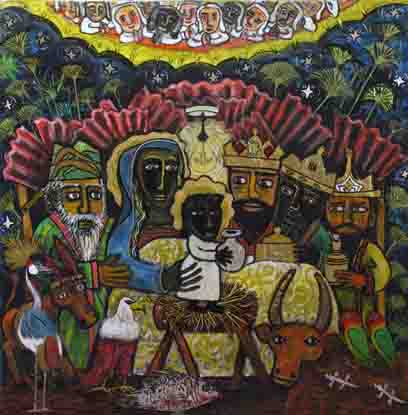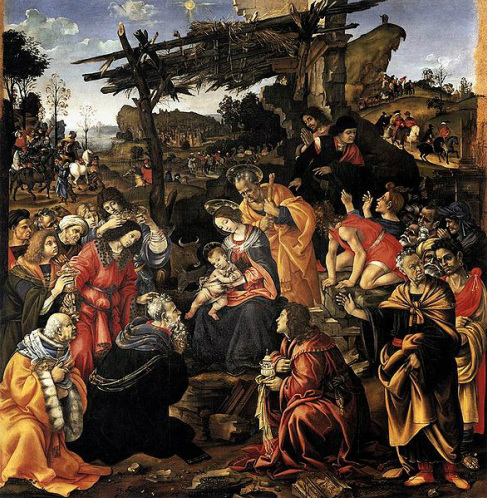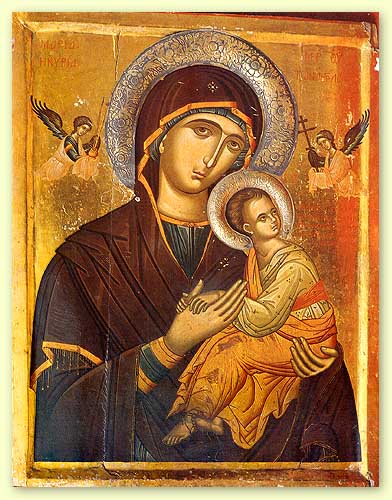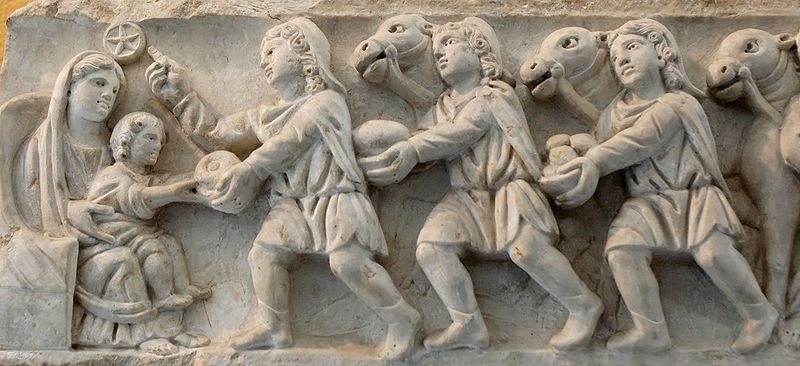_ Part I
In the third chapter, Norm finally gets to go on his excursion to Bethlehem. Prior to his arrival in the town, he spent many hours researching the differences and parallels between Matthew and Luke with an obvious focus on the birth story. After an exchange with his former professor, he raises many questions about the Greek parallels to the Christian birth story, the possibility of Matthew and Luke altering their interpretations due to outside influences, as well as several others. Following his first day in Bethlehem, Norm spends the evening discussing these questions with two professors and two students from an American seminary who happened to be staying at the same place he was.
Part II
Throughout the chapter, Norm questions the historical accuracy and truth in the birth stories of Matthew and Luke. His research of the Gospels points out similarities and differences between the two birth narratives as well as the authenticity of a virgin birth. In response to his query, Guilder lays out four points in which he criticizes the thought of a virgin birth. While visiting the supposed spots of Jesus’ birth, Norm questions the authenticity of the locations in which all of these significant events took place; questions that have been asked since the 2nd and 3rd centuries (90-91). During his discussion with the American seminary students and professors, the thought that Jesus may have been portrayed with the story of Moses in mind is brought up. However, Prof. Modred had a point in that when we borrow information from the past, we attach its significance to the present. In doing so, we add more relevance to the present (98). It seems to me that Matthew added in these parallels in order to solidify the significance and holiness of Jesus.
1) The third chapter is concerned with finding the historical birth story. Beginning with an evaluation of similarities and differences between Matthew and Luke, Norm decides to examine the concept of the virgin birth. This concept is not unknown in the ancient world. Since the accounts of virgin birth and divine conception was not unheard, Guilder makes the claim that is only makes sense that the stories make Jesus rise above the other stories by having all the miracles (77-80). Upon reaching Bethlehem, Norm enters into conversation with visiting academics about the correlations between Jesus and Moses as well as Israel. They focused on the specifics points of the story such as the travelling of the family and locations, which leads into the final part of the chapter which examined the validity of Quirinius (80-102).
2) This chapter allowed for an interesting examination of the birth narratives with the dialogue recorded in the end. This gave way for questions to be raised about the possible art work or poetry in the gospels. As I read it I felt that I could see the gospels now as a Ken Burn’s work, but made separate from each other.
Part I
Chapter 3 of A Hitchhiker’s Guide to Jesus is focused mainly on Jesus’ birth story. Matthew and Luke are compared quite a bit throughout this chapter because they both mention the birth story, but in two different ways. Norm finds himself in Bethlehem wondering if that is in fact where Jesus was brought into this earth. Mary’s virginity is also an issue in this chapter, and Norm corresponds with his professor trying to seek more information on the matter (80-84). In addition to discussing Jesus’ birth narrative, Norm adds in three Pagan birth narratives in attempt to show their similarities (85-87). Since Norm is a Christian himself, he struggles with the thought of Jesus being born from a normal conception and wonders how other Christians would take this question.
Part II
Chapter 3 contained mostly conversations with other scholars along with charts that compare the Gospels about the birth story. In an email from Guilder, he brings up many points about Jesus’ birth narrative. A major point that caught my attention the most is the legitimacy of Jesus. Guilder noted that Jesus’ birth could be illegitimate and that Mary could have been seduced or raped (82). This challenges Norm and would definitely challenge most Christians because a “normal” conception would go against what Christians have so long believed about Jesus’ birth (85). Mary being a virgin and having a son from the Holy Spirit is a major part of the Christian faith, and like Norm I wonder how perceptions of Jesus would be altered.
Part I
In the third chapter of A Hitchhiker’s Guide to Jesus, Norm is on his way to Bethlehem. Before departing, Norm compares details shared by both Matthew and Luke: specifically, Mary conceiving Jesus while still a virgin, and Jesus being born in Bethlehem (77-78). In Matthew, Joseph is the main focus and not much is said about Mary or her ideas behind how the baby originated. In Luke, Mary is mentioned more often while Joseph is of less importance (79). Norm adds a conversation he had with Guilder about his views and opinions on the matter. Not surprisingly, Guilder mentions four viewpoints that lead him to believe the legitimacy of the birth narrative (81-84). Norm adds in three pagan birth narratives of Alexander the Great, Octavius, and Apollonios of Tyana that show their similarities with Jesus’ birth narrative (85-87). Norm then ventures into Bethlehem where he is shown the birth cave and manger of Jesus (89). Later on, Norm encounters two professors and two students who introduce him to the idea that Matthew and Luke could be more accurately considered a docudrama, being an “artistic interpretation of real events”(93).
Part II
While reading this chapter, Guilder’s response to Fisk’s questions (specifically #4, Jesus’s legitimacy) didn’t sit right with me. Guilder states that Mary could have been seduced or raped causing her conception (82). I recognize that Guilder is just sharing different views and opinions shared by people trying to come up with answers, however, I feel as if these opinions and ideas take away from the faith aspect of those who call themselves Christians. Throughout history, having faith is on of the strongest practices of Christians and it’s that specifically that sets Christians apart from others looking for facts and answers to questions they don’t understand. Personally, having faith in the miracle of Mary’s virgin birth is what makes the story stand apart and so meaningful.
Question: By trying to put historical evidence on stories such as the miracle of Mary’s conception, does it weaken Christianity?
Part I
Chapter three of the book Norm talks a lot about the birth of Jesus as well as Mary and Joseph. He does a lot of comparing Matthew and Luke to each other because they both offer different sides to the birth narrative. Matthew focuses on Joseph where Luke focuses on Mary (92). We also learn shortly into the reading that there are two parallels that stand out: the miracle of Mary’s virginity and the location, Bethlehem. Along with that Norm struggles to try and find an answer about whether or not Jesus’ birth was a virgin birth or not (80-84). He then starts questioning himself and wonders how a “normal” conception would alter his perceptions of Jesus (85). When I think about that question it’s really hard to imagine how I would react. We’re so used to imagining Jesus as “perfect” but what if he wasn’t so perfect and not born of a virgin?
Part II
With trying to discover the truth about the virgin birth Norm looks to answers from Guilder. In this chapter there are a lot of conversations between Norm and Guilder as well as charts that compare the Gospels. Guilder goes on to give us several of his thoughts about the birth and one that really stood out was when he was suggesting about how Jesus’ birth may be illegitimate (82). It really took me by surprise that some people may believe that Mary was seduced or raped. Other than the virgin birth the other main question Norm has is about the census that Luke brings up. In Luke 2:2 the census is what brought Mary and Joseph to Bethlehem (100). Norm struggles to find an answer and discovers that there is no real evidence that that was true. By the end of this chapter Norm discovers that his historical quest for Jesus won’t avoid a literary quest for the Gospels (102).
Part 1
In Chapter three, Norm embarks on an adventure to Bethlehem. While meeting a group of Muslims he starts to question the differences about Jesus’ birth and childhood. They all have distinctive areas in which Mary and Joseph lived and which angels visited which parents (77-79). When Norm arrives in Bethlehem he is taken back by the large buildings covering the ancient church (88). He is also surprised that the birth place of Jesus is turned into an attraction for tourists. Later on that day, Norm meets two professors and two students who start discussing the differences in the gospels. It is then that they compare and contrast Matthew to the Old Testament and find similarities (94).
Part 2
In Matthew’s Gospel he portrays Jesus as another Moses. In the Old Testament the pharaoh slaughtered the Israelite infants because he feared Moses, just like Herod killed all the infants in Bethlehem because he feared Jesus. Also, the father of Jesus and Moses were told by angels to move to protect their families. (94) To me it seems that when Matthew was writing his gospel he knew about Moses and almost tried to connect him and Jesus. This is another example of making Jesus look good. He already had the Christians won over, but here Matthew compares him to a previous hero of Israel. I believe this was done to influence the followers of Moses to become followers of Jesus.
Part I
Chapter three of A Hitchhiker’s Guide to Jesus concentrates on the subject of Jesus’ birth and family descent. Norm struggles to decipher the truth when reading the birth narratives of the Gospels due to the authors’ ‘creativity’ when writing. Norm dissects the birth narratives and discovers two main differences: 1) The “itinerary of the holy family” (where they began before Jesus’ birth and where how they ended up in Nazareth) differs between the Gospels of Matthew and Luke (79), and 2) The concentration of different main characters; Matt. focuses on Joseph, while Luke focuses on Mary (79). Norm seeks the opinions of many on this subject including his professor Guilder, and a group of fellow travelers in Israel.
Part II
Throughout the chapter Norm creates many charts that point out the similarities and differences between the stories of Jesus’ birth and the holy family. Norm questions the long accepted idea that Jesus was born a ‘virgin birth’ and seeks the aid of his professor Guilder to help him discover the truth. Guilder lays out four notions of skepticism behind Mary’s virginity which state that there is little known about Jesus’ birth, the stories retold in the Gospels express different versions of Jesus’ virginal birth, birth from a virgin has ties to ancient Greece, and that New Testament accounts could simply be trying to counteract rumors of “Jesus’ illegitimacy” (81-82). Another big question that haunts Norm is the idea of the census which, in Luke, guided the holy family to Bethlehem. Norm discovers that there are no plausible historical facts behind Luke’s census, although he is not completely convinced that Luke made it up entirely. This chapter ends with Norm’s realization that his quest for the historical Jesus is not without the literary exploration of the Gospels, as he sets out in search for a better understanding of their intentions.




 RSS Feed
RSS Feed